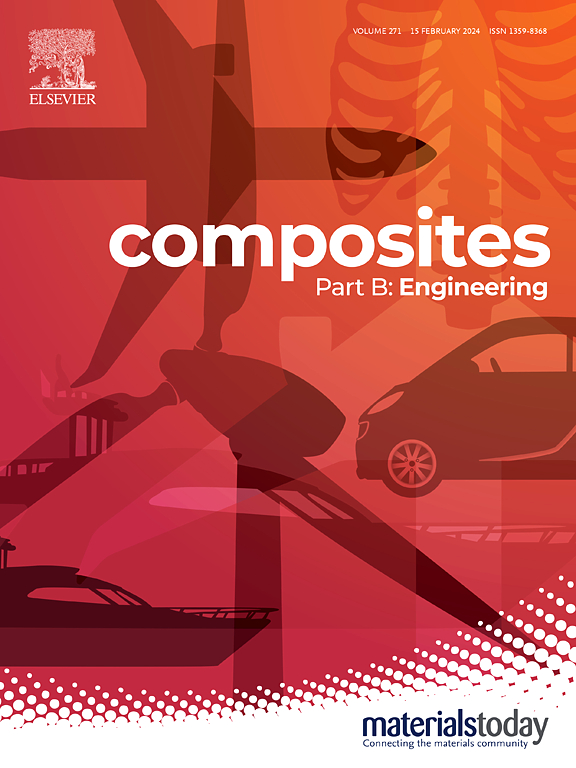Ultra-wear-resistant high-entropy nanocomposite through gradient nanograined glaze-layer at 1000 °C
IF 12.7
1区 材料科学
Q1 ENGINEERING, MULTIDISCIPLINARY
引用次数: 0
Abstract
The development of ultra-wear-resistant metallic materials capable of withstanding extreme temperatures remains a critical challenge in advancing tribological systems for aerospace, energy, and manufacturing industries. Here, we introduce a Co25Ni23Cr20Fe20Ti6Al4B2 crystal-glass high-entropy nanocomposite, engineered with a high density of hierarchical nanoprecipitates. At 1000 °C, this material demonstrates an unprecedented negative wear rate of −2.3 × 10−6 mm3/Nm, surpassing state-of-the-art superalloys and intermetallic composites, while maintaining a low coefficient of friction of 0.26, comparable to advanced ceramic lubricants. This exceptional performance stems from a gradient nanograined glaze layer that dissipates frictional strain and suppresses brittle cracking and spalling of metallic oxides in the tribo-layer. Our findings expand the design space for high-entropy alloys and establish a scalable framework for developing next-generation ultra-durable materials for extreme environments.
1000 °C 下通过梯度纳米粒状釉层获得超耐磨高熵纳米复合材料
开发能够承受极端温度的超耐磨金属材料仍然是推进航空航天、能源和制造业摩擦学系统的关键挑战。在这里,我们介绍了Co25Ni23Cr20Fe20Ti6Al4B2晶体玻璃高熵纳米复合材料,具有高密度的分层纳米沉淀物。在1000°C时,该材料表现出前所未有的负磨损率- 2.3 × 10 - 6 mm3/Nm,超过了最先进的高温合金和金属间复合材料,同时保持0.26的低摩擦系数,与先进的陶瓷润滑剂相当。这种优异的性能源于纳米级渐变釉层,它可以消除摩擦应变,抑制摩擦层中金属氧化物的脆性开裂和剥落。我们的研究结果扩大了高熵合金的设计空间,并为开发下一代极端环境超耐用材料建立了可扩展的框架。
本文章由计算机程序翻译,如有差异,请以英文原文为准。
求助全文
约1分钟内获得全文
求助全文
来源期刊

Composites Part B: Engineering
工程技术-材料科学:复合
CiteScore
24.40
自引率
11.50%
发文量
784
审稿时长
21 days
期刊介绍:
Composites Part B: Engineering is a journal that publishes impactful research of high quality on composite materials. This research is supported by fundamental mechanics and materials science and engineering approaches. The targeted research can cover a wide range of length scales, ranging from nano to micro and meso, and even to the full product and structure level. The journal specifically focuses on engineering applications that involve high performance composites. These applications can range from low volume and high cost to high volume and low cost composite development.
The main goal of the journal is to provide a platform for the prompt publication of original and high quality research. The emphasis is on design, development, modeling, validation, and manufacturing of engineering details and concepts. The journal welcomes both basic research papers and proposals for review articles. Authors are encouraged to address challenges across various application areas. These areas include, but are not limited to, aerospace, automotive, and other surface transportation. The journal also covers energy-related applications, with a focus on renewable energy. Other application areas include infrastructure, off-shore and maritime projects, health care technology, and recreational products.
 求助内容:
求助内容: 应助结果提醒方式:
应助结果提醒方式:


